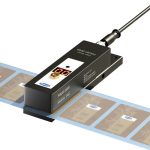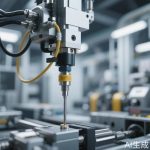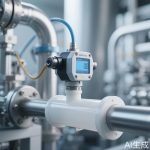In today’s fast-paced industrial landscape, efficiency, safety, and sustainability are more than just buzzwords—they are the cornerstones of success. At the heart of this transformation lies a technology that often goes unnoticed but plays a pivotal role: industrial monitoring sensors. These tiny yet powerful devices are the unsung heroes of modern manufacturing, providing real-time data that drives smarter decisions, prevents costly downtime, and ensures operational excellence.
Industrial monitoring sensors come in various forms, each designed to track specific parameters critical to manufacturing processes. Temperature sensors, for instance, ensure that machinery operates within safe thermal limits, preventing overheating and potential failures. Pressure sensors monitor fluid and gas systems, alerting operators to leaks or abnormal conditions before they escalate. Vibration sensors detect irregularities in rotating equipment, offering early warnings of wear and tear that could lead to breakdowns. Together, these sensors create a comprehensive network of intelligence that keeps operations running smoothly.
The benefits of integrating these sensors into industrial systems are immense. By continuously collecting data, they enable predictive maintenance—a game-changing approach that shifts from reactive fixes to proactive interventions. Instead of waiting for a machine to fail, maintenance teams can address issues based on sensor alerts, reducing unplanned downtime by up to 50%. This not only saves costs but also extends the lifespan of equipment, contributing to long-term operational sustainability.
Beyond maintenance, industrial monitoring sensors enhance product quality and consistency. In sectors like pharmaceuticals, food processing, and electronics manufacturing, even minor deviations in environmental conditions can compromise product integrity. Humidity sensors, for example, ensure that storage areas maintain optimal moisture levels, while optical sensors inspect products for defects with unparalleled precision. This level of control minimizes waste and ensures that every item meets stringent quality standards.
Safety is another area where these sensors make a significant impact. In hazardous environments such as chemical plants or mining sites, gas sensors detect toxic or combustible gases, triggering alarms and ventilation systems to protect workers. Similarly, motion sensors in automated warehouses prevent accidents by ensuring that machinery halts when humans are detected in restricted zones. By creating safer workplaces, industrial monitoring sensors not only comply with regulations but also foster a culture of care and responsibility.
The rise of the Industrial Internet of Things (IIoT) has further amplified the capabilities of these sensors. Connected via wireless networks, they form part of a larger ecosystem where data is seamlessly transmitted to cloud platforms for analysis. Advanced algorithms and machine learning models then process this data, uncovering patterns and insights that human operators might miss. This synergy between hardware and software empowers industries to achieve unprecedented levels of automation and intelligence.
Looking ahead, the future of industrial monitoring sensors is brimming with possibilities. Innovations such as self-powered sensors that harvest energy from their environment and nanotechnology-based sensors with ultra-high sensitivity are on the horizon. These advancements will make sensors even more versatile, affordable, and integral to industrial operations. As industries continue to embrace digital transformation, these devices will undoubtedly play a central role in shaping the factories of tomorrow.
In conclusion, industrial monitoring sensors are far more than mere components—they are the eyes and ears of modern manufacturing. By delivering real-time insights, enhancing safety, and driving efficiency, they empower industries to thrive in an increasingly competitive world. For businesses looking to stay ahead of the curve, investing in these technologies is not just an option; it is a necessity.




Leave a Message